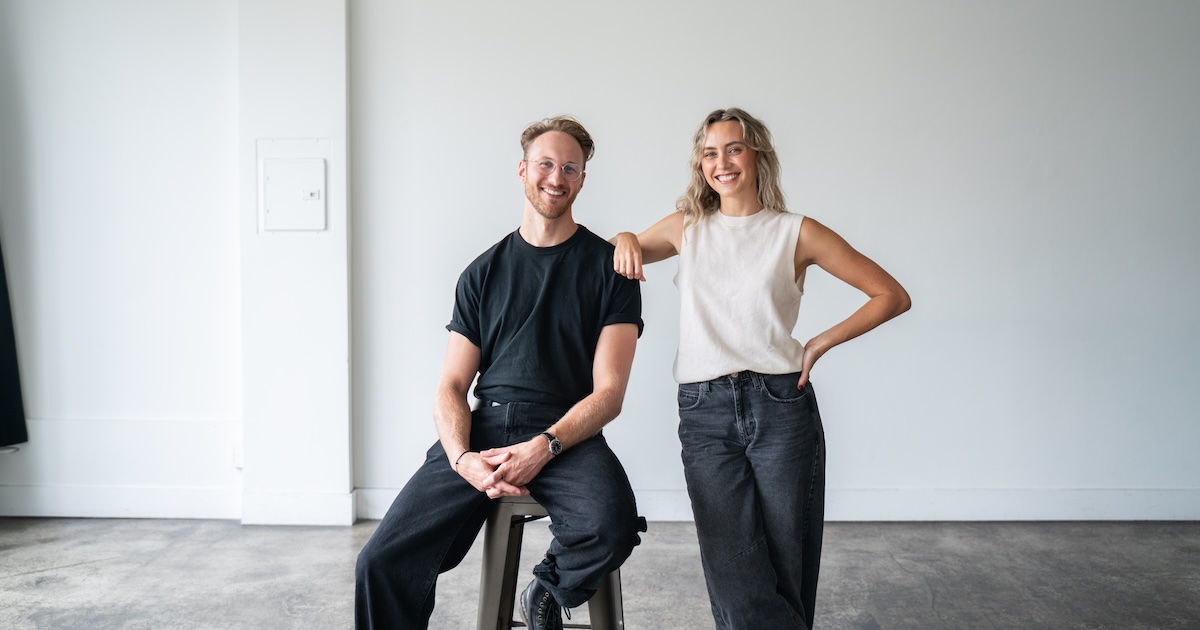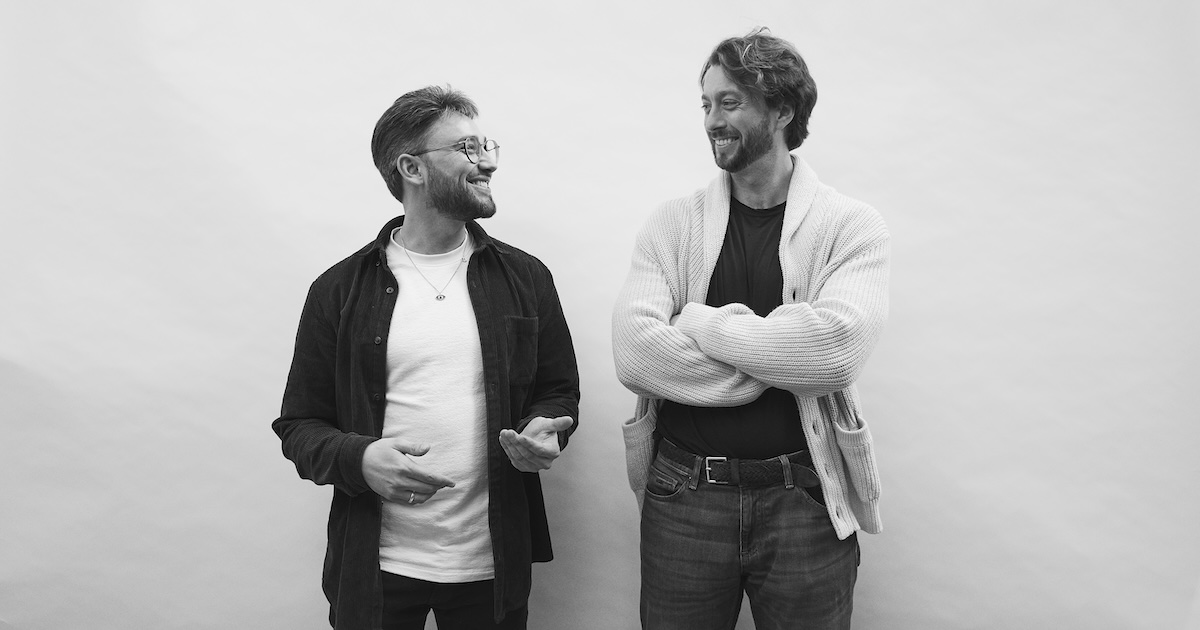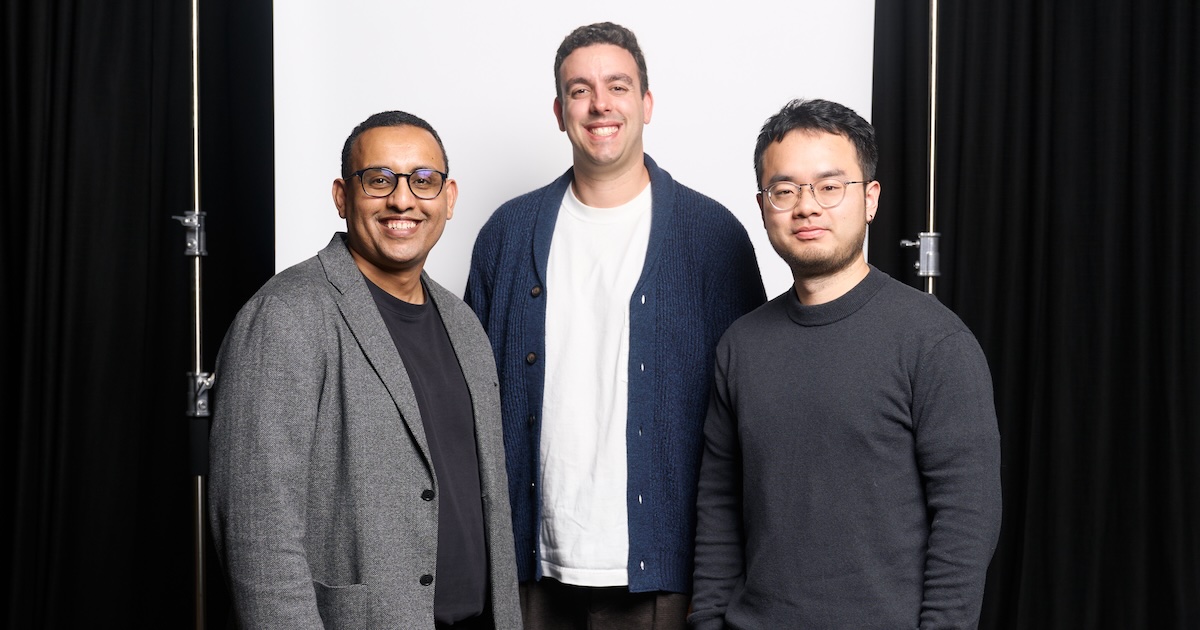
Spotlight On: Lucy Mort, Sunroom
Learning more about Lucy Mort, the co-founder and CEO of Sunroom.
When Sunroom co-founder and CEO Lucy Mort goes in, she goes all in. From delving deep into customer discovery mode on OnlyFans to seeking out a co-founder with specific dating app brand experience (that would be Michelle Battersby), Lucy is unafraid to get into the weeds and work through the thorniest questions with her community. It's an approach sharpened through her experiences at Hinge, where she led multiple design developments in pursuit of facilitating dating "the way Millennial women wanted to do it".
Lucy and Michelle's deep community understanding underpins the experience of Sunroom, an app to help women and non-binary creators make money. On face value, the product helps creators monetise their audience. But the way in which it does that - from the UX, to the words used on the platform, to the 'bold, futuristic and a little bit ugly' visual identity, Sunroom is something much more. Get to know Lucy, the story behind Sunroom and her reading recommendations for fellow founders in this month's profile
Blackbird: Tell us a bit about the initial idea behind Sunroom.
Lucy Mort: The idea for Sunroom was about a year in the making. I was spending a lot of time in online communities that were really sex-positive — platforms like Feeld and Fetlife, and communities like NSFW. That is a part of my identity that I was exploring at the time. I started a WhatsApp group called “Sunroom Softcore” where people would exchange spicy pics, compliment one-another, and sometimes meet up. I was trying to test whether community-based dating could work, and trying to understand if dating other sex-positive people was something that was important to this community. I ultimately decided not to pursue that path. It was around this time that OnlyFans started blowing up. I was curious about the stories I was hearing, so I jumped on and subscribed to a few creators. I became fascinated by this erotic world that was dominated by women creators who were making thousands, sometimes tens of thousands of dollars a month, posting content and chatting to their fans. I was let into Telegram groups with thousands of OnlyFans creators — all women — and asked them so many questions. I started my own creator account, which felt like a bold move at the time. But it allowed me to understand the mechanics of selling content, promoting your account, and understanding exactly what people are paying for on OnlyFans. This allowed me to understand the pain points OnlyFans creators were experiencing, because by this point I’d gone into customer discovery mode and realized there was definitely an opportunity to build an alternative platform. I was personally apprehensive to promote my profile on any of my social platforms, I definitely felt the threat of the stigma surrounding OnlyFans, and I knew other women would feel this too.
I also spoke to a lot of OnlyFans fans, and learnt that discovery was a major pain point. I was doing the On Deck founder fellowship at the time, and I teamed up with another fellow to build a search engine for OnlyFans profiles. It took off quickly. I realized that discovery had to be a part of this future product.
My introduction to TikTok early on in the pandemic also shaped the concept for Sunroom. Seeing people younger than me being so expressive, confident, openly talking about relationships, sex, identity, etc was a huge indication of where our openness as a society is trending. Building a platform in this direction made sense.
BB: How did you meet Michelle, and when did you decide to found Sunroom together?
LM: Michelle was critical to the next phase of Sunroom’s idea development. I knew that brand was going to be the key differentiator of this hypothetical product. At Hinge we seriously admired Bumble’s brand and their marketing prowess. I really wanted to try and partner with someone from Bumble. My roommate at the time knew Michelle, and I asked him to introduce me. Michelle and I first met on a call, I was living in Mexico at the time and she was in Melbourne. I offloaded as much of my learnings about OnlyFans and my developing thesis on the space as I could in an hour. Michelle was definitely curious, and she went off to do her own research. Part of that research involved Michelle speaking with creators in her own network. Michelle asked them all if they’d considered using OnlyFans to monetize their audiences. They’d all considered it, but none had taken the leap. They feared tarnishing their personal brands, but they wanted this sort of income stream. Michelle also heard stories from these creators about the censorship, inconsistent moderation, and trolling they’d experienced on existing social platforms. There was a deep frustration felt by women who wanted to post about things like childbirth, sex, their bodies, pleasure, and identity, and who wanted to be able to monetize that content without judgement. Michelle was excited by the challenge of changing how people thought about these categories and monetization at-large. She agreed to join Sunroom as a co-founder in late November 2020.
After Michelle joined, there were many more months refining the idea for Sunroom, and pinpointing exactly who we were building Sunroom for.
%2520and%2520Lucy%2520Mort%2520(right)%25203.png)
BB: Sunroom is setting out to be a place where women and non-binary creators can 'capitalise on their image or skills safely' - can you take us through how that works?
LM: Sunroom looks a lot like if TikTok and Instagram had a baby, except with a monetization layer over almost everything. It’s designed for women and non-binary creators who have already built an audience on other platforms, to offer more in-depth content and access to that audience on Sunroom. We refer to people who support creators on Sunroom as “Members”, as they pay to join the community of particular creators. A monthly membership gives members access to all of a creator’s content, their DMs, comments, and they can submit post suggestions. Additionally members on Sunroom can tip creators and “cheer” for their posts, using Beams (our in-app currency). Earnings are paid out to creators at the end of each month.
On the safety front, we take content leaks really seriously. SunBlock is our anti-screenshot and anti-screenrecord technology, which ensures what’s posted on Sunroom stays on Sunroom. Our creators tell us that SunBlock makes them feel so much more comfortable posting sensitive content. telling personal stories, and putting a price on their content.
People who monetize their image or productize themselves have historically been looked down upon, so with our brand we really celebrate making money in this way. Our hope is to make so many more women and non-binary people comfortable capitalzing on their image and skills.
BB: Prior to Sunroom, you led Hinge through multiple design developments and redesigns - what were some of the key lessons you learned through that experience and how did these influence the design for Sunroom?
LM: The biggest thing I took away from the design and development of Hinge, was that you really have to understand the nuances of your core users’ needs, and ensure that they’re reflected in the nuances of the product. The specific problem we were solving at Hinge wasn’t that people wanted to meet people they could date. It was that Millennial women — who at the time were the driving force of the dating market — were tired of hook-up culture, and they specifically wanted to be in relationships. There was no product on the market that acknowledged that need. We dedicated ourselves to understanding that specific problem and built a product and brand that facilitated dating in the way Millennial women wanted to do it — slowly, with more information, and with stronger signals. In the product we eliminated the snap-judgements that come from swiping, we built richer profiles, and allowed conversations to be started from content.
We’re facing a similar situation with Sunroom. There are other products available to help creators directly monetize their audiences. But creators are a highly brand-conscious bunch, and they’re very wary of being judged for monetizing themselves. We needed to reflect these concerns in the product and brand. That’s why we created Beams and Cheers as the methods of tipping — we abstracted away money and ensured the transactions felt light, playful, and instantaneous. It’s also why we’ve put a lot of effort into the aesthetics of the app and the brand, it was essential that we created a product that met the aesthetic standards of our creators. The need to make money is one problem, but the real problem that we’re solving is making money with dignity and class.

You've written about the Gen Z aesthetic - something that Sunroom has been recognised for in its own design identity. How are you referencing and designing for Gen Z creators with Sunroom?
TechCrunch described Sunroom as having been “run through a generously Gen Z design filter.”, which is quite hilarious as Michelle and I are both old Millennials ; ) But when we looked at how social norms were evolving, it was Gen Z who were so obviously paving the way for the sex-positivity and body-positivity movements, and leading the conversations around gender, identity, mental health, and self-expression. Sunroom has a progressive mission, which aligns neatly with the progressive ideals of Gen Z. We wanted to align ourselves visually with the emerging aesthetics of Gen Z so that it’s clear the sort of company we are, and the sort of content that’s welcome.
Gen Z do not value shiny or polished content. We don’t have filters on Sunroom, which encourages more low-fi posts, and honest and casual storytelling.
Our visual identity is bold, futuristic, and a little bit ugly. It’s emblematic of a generation that spends a lot of time online, but pines for authenticity at the same time.
Sunroom raised its seed round with more than 50 per cent female angel investors and funds. Can you share a bit about why it was important to you and Michelle to have this representation and how you found and engaged these investors?
We knew that if we were building a product whose purpose was to make women money, that we wanted the people who co-owned the company to be women. We were very deliberate about getting intros to women investors. Every investor we met, we’d ask them for intros to women-led funds or women angels. Fortunately, the problem we were building for resonated with a lot of women.
What most excites you about the future of Sunroom?
It’s really exciting to create value and a new flow of money into the pockets of everyday people. And the exciting thing about Sunroom is that it shows women that they have inherent qualities and creativity that can be turned into income. You don’t need specific skills or licenses or qualifications. You can just show up on the internet and be yourself, and if you work hard and your content resonates with people, you’ll do well. I think this means that Sunroom could enable upward social mobility for so many people in a new and unexpected way. That sort of future is very exciting to me.
Lucy's Spotlight On:
A book that is worth reading: Endurance: Shackleton's Incredible Voyage by Alfred Lansing
A podcast you never miss: Venture Stories by Village Global
The last great article you read: Jules Walter on how to develop product sense in Lenny's Newsletter
Someone to follow on social: @Aella_girl









